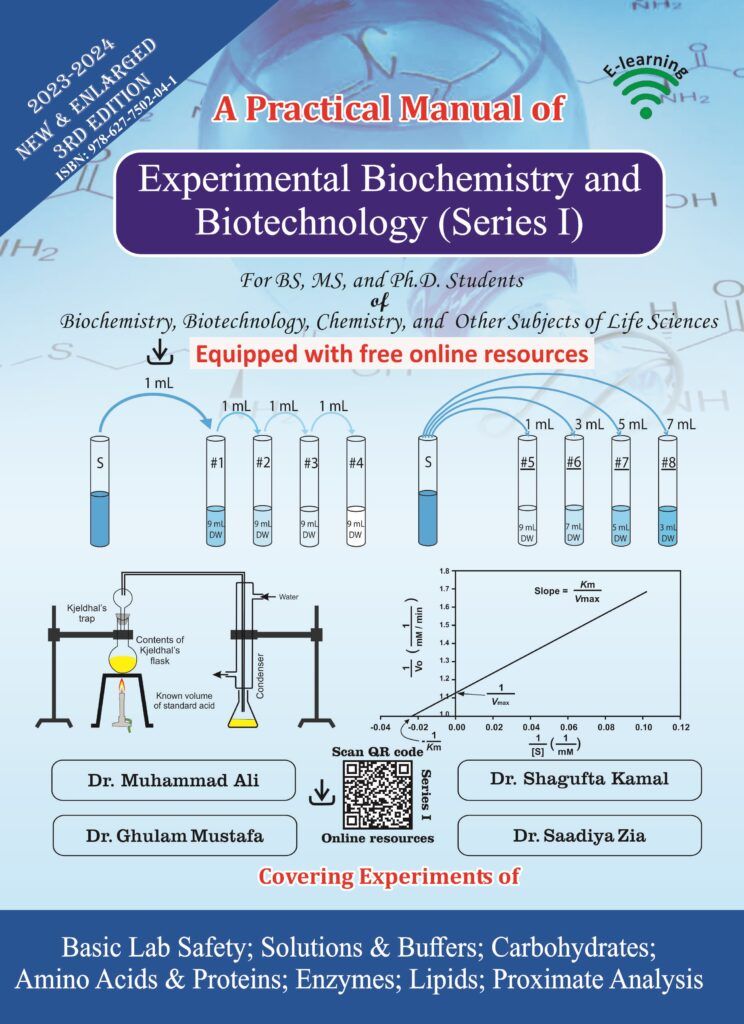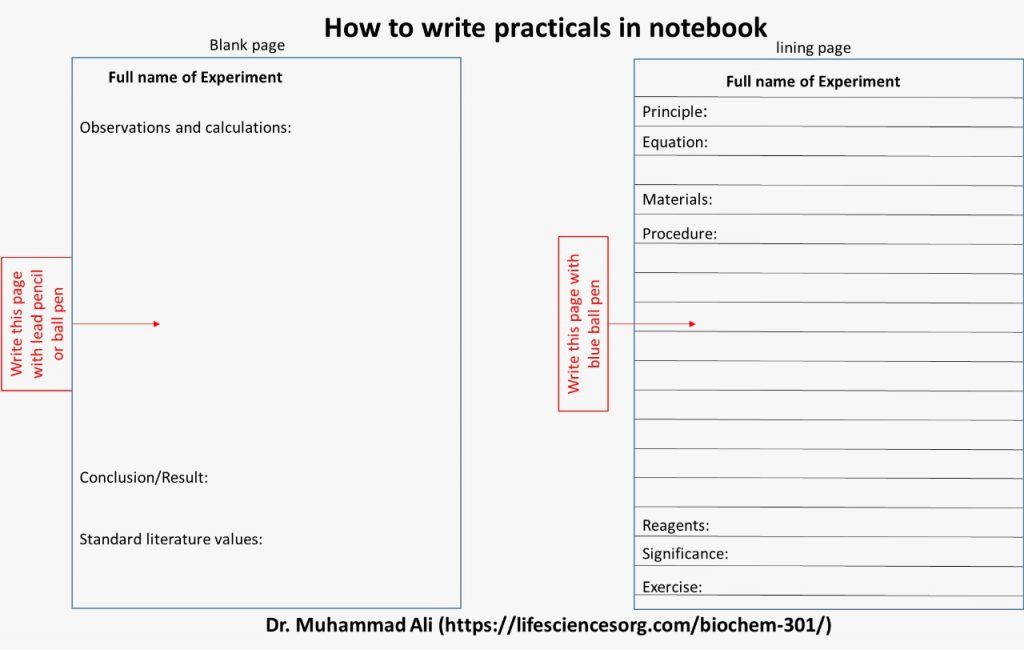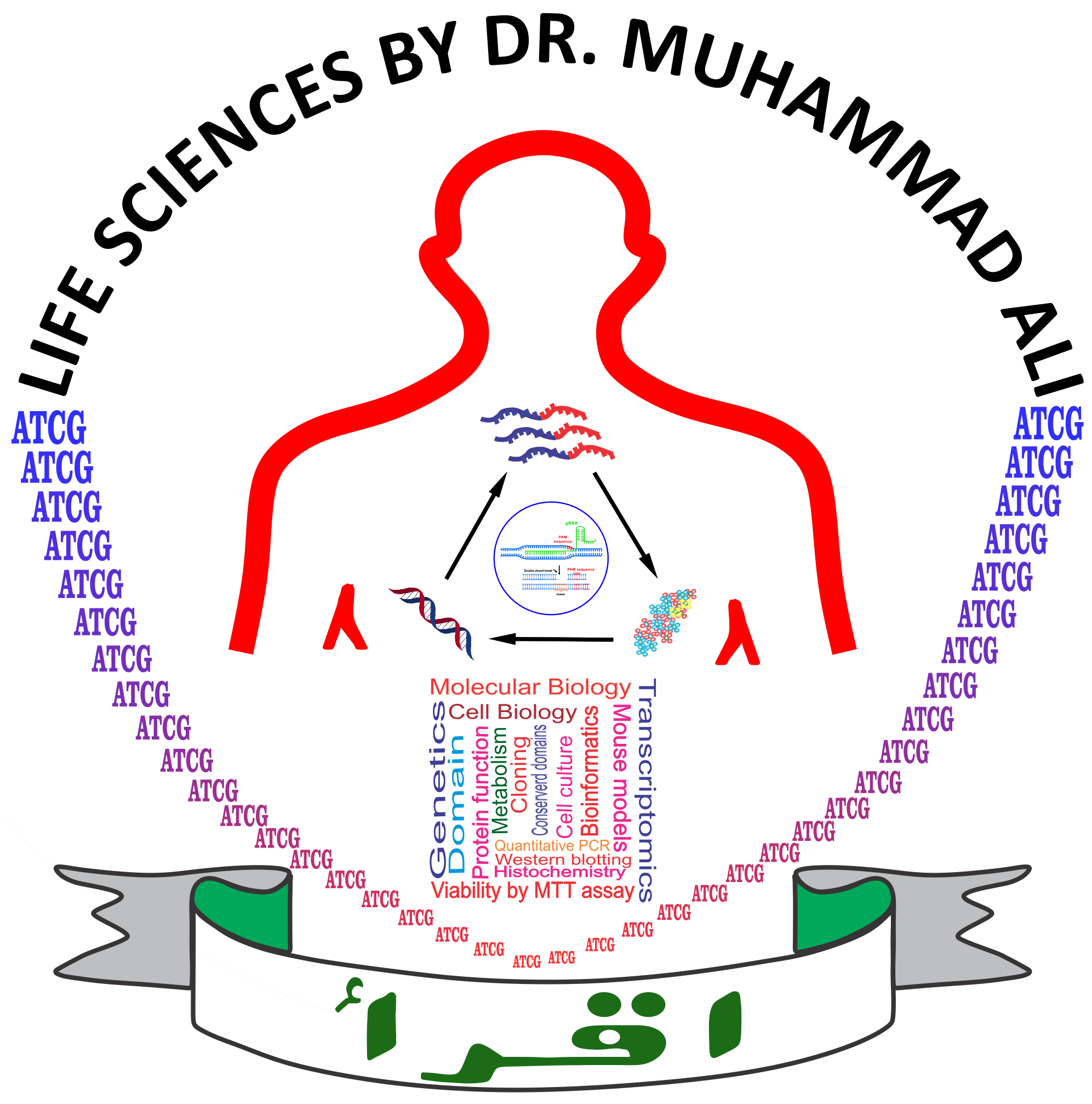PharmD-308 (List of Practical) 4(3-1)
PHARMACEUTICAL CHEMISTRY-IIB (BIOCHEMISTRY) [PRACTICAL] PBCH1031 Cr. Hr. 01
1. Qualitative analysis of:
- Preparation of different nature of solutions: (molar and normal, percentage). (S1: 2.1, 2.3, 2.7-2.9, 2.11, 2.12)
- Carbohydrates, (3.1 to 3.3)
- Amino acids, (4.1 to 4.4)
- Peptides and Sugar (4.10, 4.15, 3.14, 3.4 ),
- Uric acid, (will provide you)
- Proteins, (4.17)
- Lipids and Sterols (Cholesterol), (5.2 to 6.4, 6.14)
- Bile salts, (6.7)
- Billirubin, (will provide you)
- Analysis of Cholesterol (6.13 and 6.14)
- and Creatinine in Blood. (will provide you)
- Carbohydrates-Glucose (reducing sugar) and any other carbohydrate using Benedict and Anthrone method, (3.9, 3.12)
- Amino acids, Peptides and Proteins using Biuret and Ninhydrin (Spectrophotometric) method. (4.11, 4.12)
- Analysis of normal & abnormal components of Urine-Sugar, Uric acid, Billirubin, Cholesterol and Creatinine. (will provide you)
Ali, M. et al., Experimental Biochemistry and Biotechnology (Series I), 2023, 3rd edition, ISBN: 978-969-7502-04-1.
Ali, M. et al., Experimental Biochemistry and Biotechnology (Series III), 2024, 1st edition, ISBN: 978-969-7502-06-5.6.13
Mid-term syllabus of PharmD-308:
1.METABOLIC FATE OF BIOMOLECULES (Anabolism and Catabolism): Carbohydrates: Brief introduction to the digestion and absorption of carbohydrates, Aerobic and anaerobic breakdown of Glucose, Glycolysis, Pentose Phosphate Pathway, Glycogenolysis, Glycogenesis, Gluconeogenesis, Citric acid cycle, Energetics of various metabolic processes. b.Lipids: Brief introduction to the digestion and absorption of lipids, Oxidation of fatty acids through 0-oxidation, Biosynthesis of fatty acids, neutral lipids and cholesterol. c. Proteins and Amino acids: Brief introduction to the digestion and absorption of proteins and amino acids, Metabolism of essential and non-essential amino acids, Biosynthesis and catabolism of Haemins and porphyrin compounds. d.Bioenergetics: Principles of bioenergetics, Electron transport chain and oxidative phosphorylation.
…. PLUS…. First 150 MCQs from each of chapters 2, 3 of the book ” MCQs in Biochemistry”. MCQs from the taught concepts and book chapters will also appear in the exam.
Final exam PharmD-308:
2. REGULATION OF METABOLIC PROCESSES:
a.Role of Vitamins: Physiological role of Fat-soluble (A, D, E and K) and Water-soluble (Thiamin, Riboflavin, Pantothenic acid, Niacin, Pyridoxal phosphate, Biotin, Folic acid, Cyanocobalamin-members of B-complex family and Ascorbic acid), Coenzymes and their role in the regulation of metabolic processes. b. Receptor Mediated regulation (Hormones): Mechanism of action of hormones, Physiological roles of various hormones, Site of synthesis and target sites of hormones. c. Secondary Messengers: Role of cAMP, Calcium ions and phosphoinositol in the regulation of metabolic processes. Gene Expression: Replication, Transcription and Translation (Gene expression) Introduction to Biotechnology and Genetic Engineering, Basic principles of Recombinant DNA technology, Pharmaceutical applications, Balance of Catabolic, Anabolic and Amphibolic processes in human metabolism, Acid-Base and Electrolyte Balance in Human body.
3.INTRODUCTION TO CLINICAL CHEMISTRY:
Introduction and importance of the clinical chemistry. Laboratory tests in diagnosis of diseases including Uric acid, Cholesterol, Billirubin and Creatinine.
…. PLUS…. First 150 MCQs from chapters 2,3,4, 9 of the book ” MCQs in Biochemistry”. MCQs from the taught concepts and book chapters will also appear in the exam. Mid syllabus will be included in the final exam.
Start preparing your presentations and assignments….. Assignment submission right after mid-exam. The presentations will also be started after mid-term exam.
__________________________________________________________________________________
Assignments and presentations of PharmD-308:
- The weightage of the assignment and presentation will be decided later.
- Start preparing your presentations and assignments….. Assignment submission is 18-04-2023.
- The presentations will also be started right after the mid-term exam.
- PPT file should not contain any designing/colours other than figures and diagrams.
- Slides should be in 16X9 ratio.
- Fonts of all header should be same and of all other text should be same.
- For detailed guidelines about the presentation of research article, visit: https://www.lifesciencesorg.combiochem-720/
- Download the template ppt file to make your presentation. The link is here (copy this link and paste in a new tab).
- Strictly follow the ppt format and it is better if you write and paste your material in the same ppt file.
K. General Question to be asked during presentation
- 1) Pathway or importance of gene/technology/discovery
- 2) Rationale
- 3) Conclusion of the full article
- 4) Conclusion of every figure
- 5) New findings presented in the article
- 6) Applications of the findings
- 7) Future prospective
- 8) Applications of the work
- 9) Principle of every technique used in the research article
Moreover, provide me a printed summary of your article containing the above headings given under ‘K’.
L. During Presentations, for EVERY FIGURE and graph, we may ask:
1. The Principle of the experiment.
2. The Reason for doing the experiment.
3. The Physiological importance of the figure.
4. The Conclusions of the figure
5. Prepare well objectively and subjectively
NO EXCUSE WILL BE ACCEPTED
_______________________________________________________________
Link to download the book ( MCQs in Biochemistry) is here.
Meeting ID: 316 824 288 013
Passcode: WNyjeA
Microsoft teams will be used whenever online classes will be held. You must make your first name as your registration number.
2017-ag-9382 Haidar Iftikhar
2017-ag-10077 Ahmad Faraz
PharmD-308 PHARMACEUTICAL CHEMISTRY-IIB 4(3 -1)
PHARMACEUTICAL CHEMISTRY-IIB (BIOCHEMISTRY) PBCH1013 [THEORY] Cr. Hr. 03
1.METABOLIC FATE OF BIOMOLECULES (Anabolism and Catabolism):
Carbohydrates: Brief introduction to the digestion and absorption of carbohydrates, Aerobic and anaerobic breakdown of Glucose, Glycolysis, Pentose Phosphate Pathway, Glycogenolysis, Glycogenesis, Gluconeogenesis, Citric acid cycle, Energetics of various metabolic processes. b.Lipids: Brief introduction to the digestion and absorption of lipids, Oxidation of fatty acids through 0-oxidation, Biosynthesis of fatty acids, neutral lipids and cholesterol. c. Proteins and Amino acids: Brief introduction to the digestion and absorption of proteins and amino acids, Metabolism of essential and non-essential amino acids, Biosynthesis and catabolism of Haemins and porphyrin compounds. d.Bioenergetics: Principles of bioenergetics, Electron transport chain and oxidative phosphorylation.
2. REGULATION OF METABOLIC PROCESSES:
a.Role of Vitamins: Physiological role of Fat-soluble (A, D, E and K) and Water-soluble (Thiamin, Riboflavin, Pantothenic acid, Niacin, Pyridoxal phosphate, Biotin, Folic acid, Cyanocobalamin-members of B-complex family and Ascorbic acid), Coenzymes and their role in the regulation of metabolic processes. b. Receptor Mediated regulation (Hormones): Mechanism of action of hormones, Physiological roles of various hormones, Site of synthesis and target sites of hormones. c. Secondary Messengers: Role of cAMP, Calcium ions and phosphoinositol in the regulation of metabolic processes. d. Gene Expression: Replication, Transcription and Translation (Gene expression) Introduction to Biotechnology and Genetic Engineering, Basic principles of Recombinant DNA technology, Pharmaceutical applications, Balance of Catabolic, Anabolic and Amphibolic processes in human metabolism, Acid-Base and Electrolyte Balance in Human body.
3.INTRODUCTION TO CLINICAL CHEMISTRY:
Introduction and importance of the clinical chemistry. Laboratory tests in diagnosis of diseases including Uric acid, Cholesterol, Billirubin and Creatinine.
PHARMACEUTICAL CHEMISTRY-I1B (BIOCHEMISTRY) [PRACTICAL] PBCH1031 Cr. Hr. 01
- Oualitative analysis of: Carbohydrates, Amino acids, Peptides and Sugar, Uric acid, Proteins, Lipids and Sterols (Cholesterol), Bile salts, Billirubin, Analysis of Cholesterol and Creatinine in Blood.
- Ouantitative analysis of: Carbohydrates-Glucose (reducing sugar) and any other carbohydrate using Benedict and Anthrone method, Amino acids, Peptides and Proteins using Biuret and Ninhydrin (Spectrophotometric) method. Analysis of normal & abnormal components of Urine-Sugar, Uric acid, Billirubin, Cholesterol and Creatinine.
Ali, M. et al., Experimental Biochemistry and Biotechnology (Series I), 2023, 3rd edition, ISBN: 978-969-7502-04-1.
Ali, M. et al., Experimental Biochemistry and Biotechnology (Series II), 2023. 2nd edition, ISBN: 978-969-7502-05-8.
Ali, M. et al., Experimental Biochemistry and Biotechnology (Series III), 2024, 1st edition, ISBN: 978-969-7502-06-5.


Lorem ipsum dolor sit amet, consectetur adipiscing elit. Ut elit tellus, luctus nec ullamcorper mattis, pulvinar dapibus leo.


Comments are closed.